Custom Solar Junction Box Manufacturer in China
Our solar junction boxes ensure reliable and safe connections for your photovoltaic systems. Designed for durability and optimal performance, our junction boxes protect electrical components from environmental factors. Featuring secure terminals and robust enclosures, they facilitate efficient energy transfer and long-lasting operation. Choose our dependable solution for your solar installations.
Linkwell Electrics - Your Trusted Solar Junction Box Manufacturer from China
Linkwell Electrics, a trusted solar junction box manufacturer from China, offers reliable and high-quality solutions for your photovoltaic systems. With years of expertise, we provide durable junction boxes that ensure safe and efficient connections for solar panels. Our products are designed to withstand various environmental conditions, guaranteeing long-lasting performance and protection for your solar installations. Choose Linkwell Electrics for dependable solar energy solutions.
Various Solar Junction Box
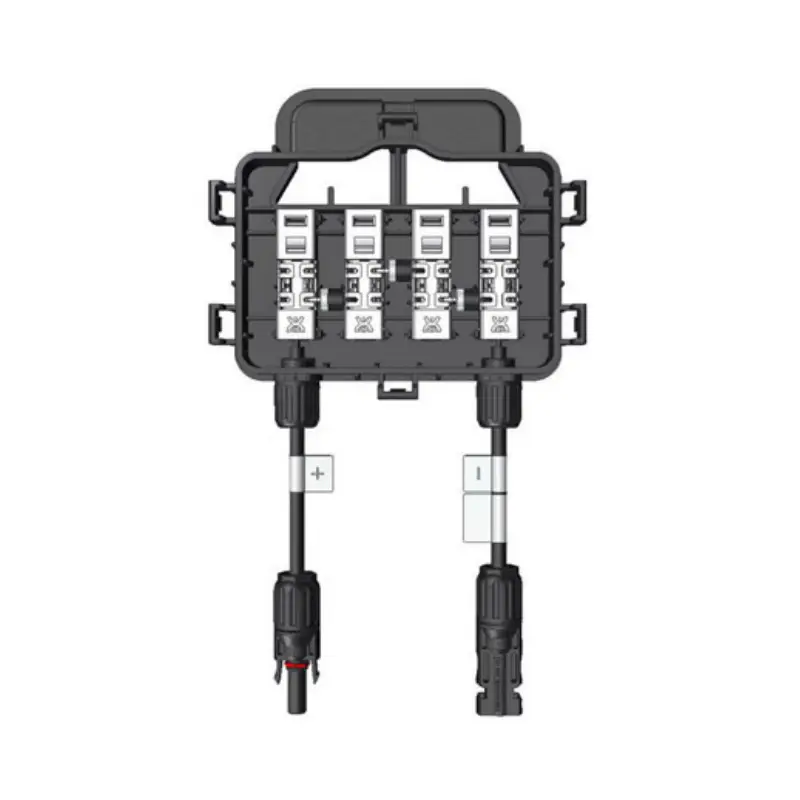
solar panel junction box
We provide dependable junction box for solar panel, crucial components for the safe and efficient operation of your photovoltaic systems. Our junction boxes offer robust protection for wiring connections against environmental factors. Featuring durable enclosures and secure terminals, they ensure reliable performance and long-term durability for your solar installations. Choose our quality junction boxes for peace of mind.
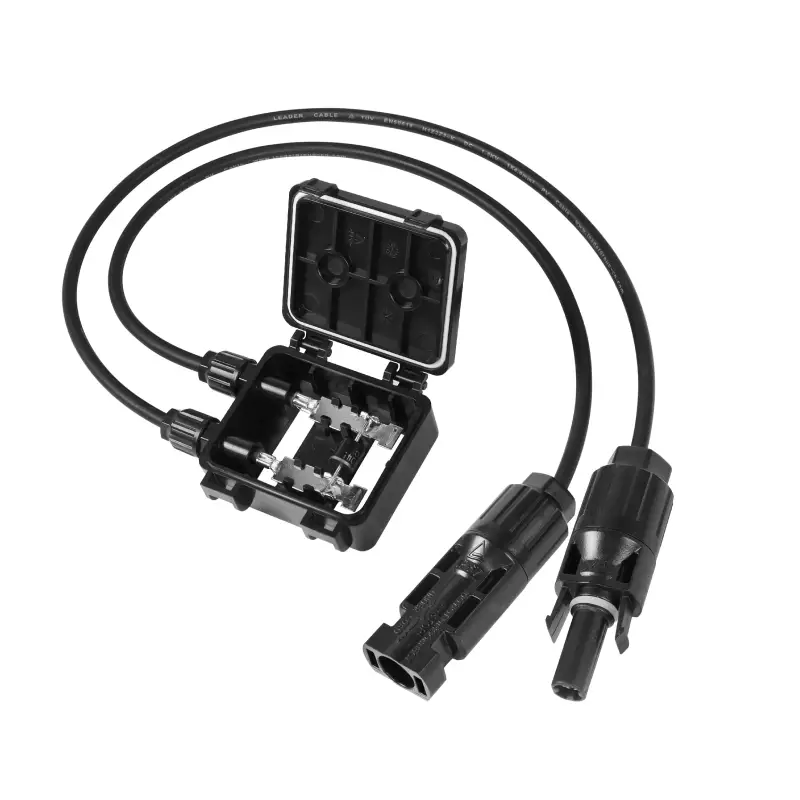
solar module junction box
We provide high-performance solar module junction boxes, crucial components for the efficient operation of your photovoltaic panels. Engineered for durability and safety, our junction boxes offer secure electrical connections and protect vital components from harsh environmental conditions. Featuring robust construction and reliable terminals, they ensure optimal energy transfer and contribute to the longevity of your solar modules. Choose our dependable solution for your solar energy needs.
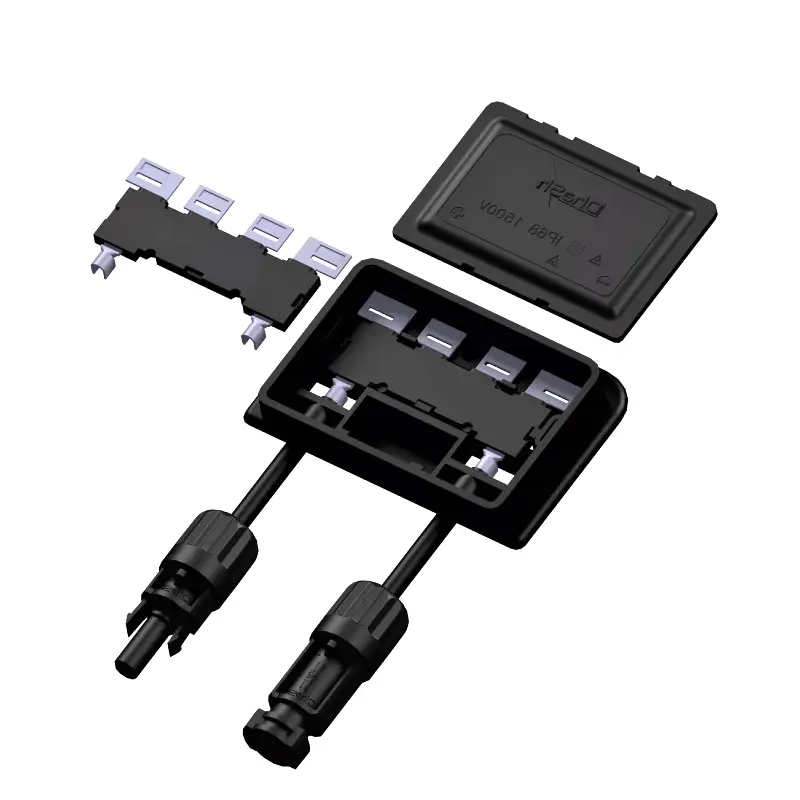
solar PV junction box
We provide dependable solar PV junction boxes, crucial components for the safe and efficient operation of your photovoltaic systems. Our junction boxes offer robust protection for wiring and connections, ensuring long-term reliability in diverse environmental conditions. Designed for easy installation and secure performance, they are an essential element for any solar energy setup. Trust our quality for your solar PV needs.
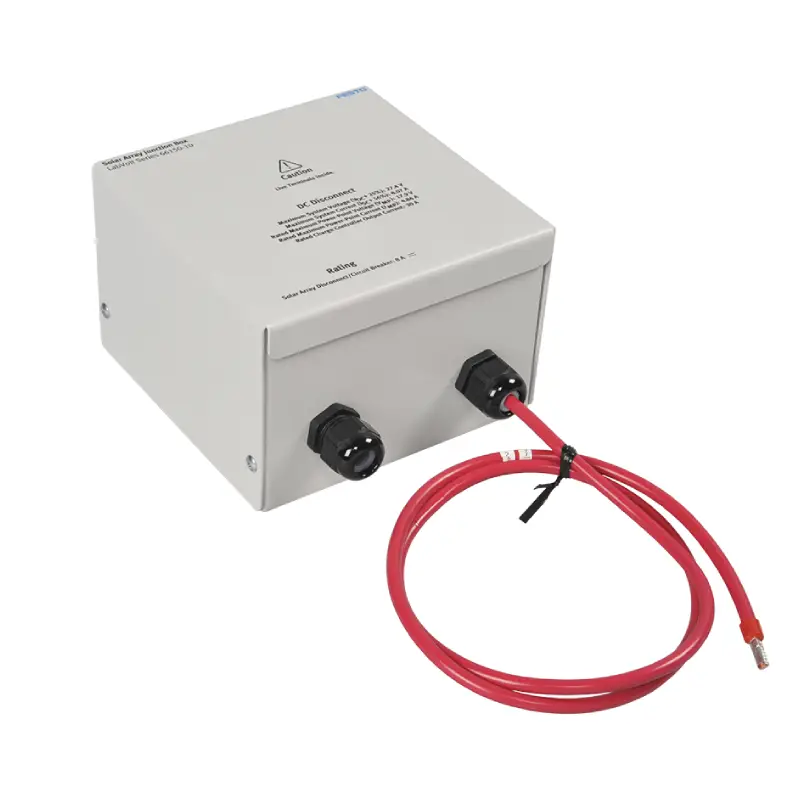
solar array junction box
We provide robust solar array junction boxes designed for the efficient and safe connection of photovoltaic modules. Our junction boxes offer excellent protection against environmental factors, ensuring the longevity and reliable performance of your solar power systems. Featuring secure wiring terminals and durable enclosures, they streamline installation and minimize maintenance. Trust our quality junction boxes for your solar array needs.
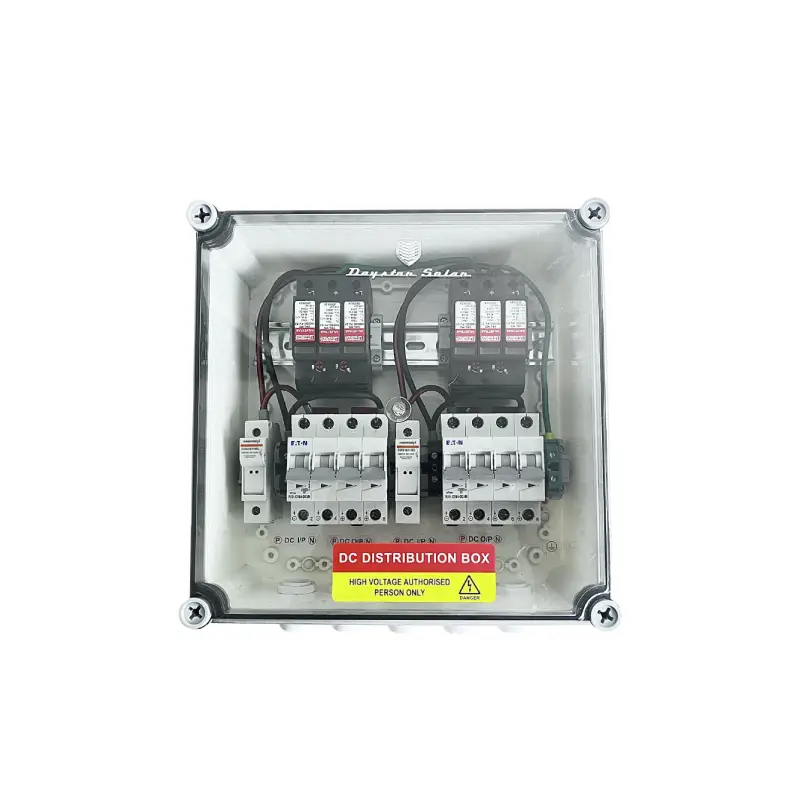
solar DC junction box
We provide dependable solar DC junction boxes, crucial for the safe and efficient operation of your photovoltaic systems. Our robust designs protect vital electrical connections, ensuring optimal energy transfer from your solar panels. Built to withstand diverse environmental conditions, our DC junction boxes offer durability and long-lasting performance. Choose our reliable solution for secure and effective solar power management.
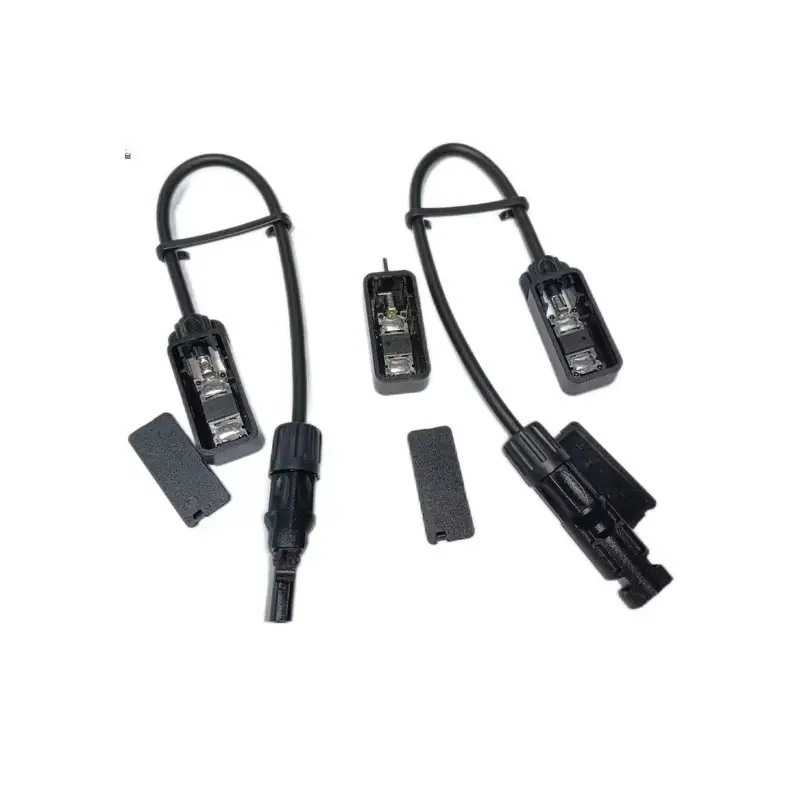
solar cable junction box
We provide robust solar cable junction boxes designed for secure and efficient connections in photovoltaic systems. Our junction boxes offer excellent protection for solar cables, ensuring durability and reliable performance in diverse environmental conditions. Featuring quality materials and easy installation, they are an essential component for a safe and long-lasting solar energy setup. Choose our dependable solution for your solar cable management needs.
Why Choose Our Solar Junction Box
Number and Type of Connectors
We understand that different solar installations have varying connection requirements. Therefore, we offer a wide array of connector options, including MC4, screw terminals, and custom-designed connectors, to perfectly match your specific solar panel and system configurations. We can tailor the number of input and output ports to accommodate your wiring needs, ensuring a seamless and efficient electrical connection. Our goal is to provide a junction box that integrates effortlessly with your existing setup, simplifying the installation process and maximizing energy transfer.
Enclosure Material and IP Rating
We recognize the critical role of the enclosure in protecting the internal components from harsh environmental conditions. We offer a selection of durable materials, such as UV-resistant plastics and robust metals, to ensure longevity and reliable performance. Furthermore, we can customize the Ingress Protection (IP) rating of the junction box to meet the specific demands of your installation environment, whether it requires dust-tight sealing or protection against powerful water jets. This customization guarantees the safety and durability of your solar connections.
Integrated Components and Functionality
We can integrate various components into your solar junction box to enhance its functionality and streamline your system. This includes adding bypass diodes to prevent hotspot formation and maintain energy production during shading, fuses or circuit breakers for overcurrent protection, and even monitoring devices for system diagnostics. By incorporating these features directly into the junction box, we can reduce the need for external components, simplifying wiring and improving the overall efficiency and safety of your solar power system.
Custom Labeling and Branding
We understand the importance of professional presentation and easy identification for your solar installations. We offer custom labeling options for your junction boxes, including clear and durable labels with your company logo, product codes, wiring diagrams, or any other specific information you require. This not only enhances the visual appeal of your installations but also simplifies maintenance and troubleshooting, ensuring a professional and easily manageable solar energy system for your clients.
what is solar junction box?
A solar junction box is a crucial component in photovoltaic (PV) systems. Typically attached to the back of a solar panel, it serves as a central connection point for the panel’s internal wiring. Its primary function is to safely and efficiently conduct the electricity generated by the solar cells to the external system.
The junction box houses essential electrical components such as bypass diodes, which prevent power loss and potential damage caused by shading or cell mismatch, and sometimes includes fuses or other protective devices.
Beyond electrical connection and protection, the solar junction box also provides a secure enclosure for these sensitive components, shielding them from environmental factors like moisture, dust, and extreme temperatures.
This robust design ensures the long-term reliability and safety of the solar panel’s electrical output. The junction box facilitates easy connection to other parts of the solar system, such as cables leading to the inverter or other panels in a string, making it an indispensable element for a functional and durable solar energy installation.
what does a solar panel junction box do?
A solar panel junction box is a vital component attached to the back of a solar panel, playing several key roles in the overall functionality and safety of a photovoltaic system.
It acts as the central hub for the panel’s electrical connections and provides crucial protection for these connections and internal components.
Facilitates Electrical Connections The junction box serves as the primary point where the solar panel’s internal wiring is connected and then routed externally. It provides secure terminals for connecting output cables that carry the generated electricity to other components of the solar system, such as inverters or other panels. This organized connection point ensures efficient and reliable energy transfer.
Provides Electrical Protection Inside the junction box, crucial protective devices like bypass diodes are often housed. These diodes prevent power loss and potential damage caused by shading or cell mismatch within the panel. Some junction boxes may also include fuses or other overcurrent protection mechanisms, enhancing the safety and longevity of the solar panel.
Ensures Environmental Protection The junction box acts as a robust enclosure, shielding the internal electrical connections and components from harsh environmental elements. It protects against moisture, dust, dirt, and extreme temperatures, which could otherwise compromise the panel’s performance and safety over time. This durable design is essential for the long-term reliability of the solar installation
function of junction box in solar panel
The junction box on a solar panel serves as a critical interface between the solar cells and the external wiring of a photovoltaic system. Its primary function is to provide a safe and organized connection point for the electrical energy generated by the panel.
By housing the electrical connections, it ensures efficient power transfer to the inverter or other components of the system. Furthermore, the junction box plays a vital role in protecting these connections and internal components from environmental factors, thereby contributing to the long-term reliability and safety of the solar panel.
Beyond basic connectivity, the solar panel junction box often incorporates components that enhance the panel’s performance and safety. These internal elements are crucial for the proper operation and longevity of the solar module. The robust enclosure of the junction box safeguards these sensitive electrical parts from moisture, dust, and temperature fluctuations, ensuring consistent performance over the lifespan of the solar panel.
Key functions of a solar panel junction box include:
- Electrical Connection: Providing secure terminals for connecting the solar panel’s internal wiring to external cables.
- Protection: Housing and shielding electrical components from environmental factors like water, dust, and UV radiation.
- Bypass Diodes: Preventing power loss and potential hotspots caused by shading or cell mismatch.
- Safety: Reducing the risk of electrical shorts and ensuring safe current flow.
- Cable Management: Offering organized exit points for cables leading to other system components.
- Grounding (sometimes): Providing a point for grounding the solar panel for safety.
types of solar junction boxes
A solar panel junction box is a vital component attached to the back of a solar panel, playing several key roles in the overall functionality and safety of a photovoltaic system.
It acts as the central hub for the panel’s electrical connections and provides crucial protection for these connections and internal components.
There are various types of solar junction boxes designed to meet specific needs and configurations.
Standard Junction Boxes These are the most common type and are designed to be weatherproof, protecting the electrical connections from environmental factors like rain and dust. They typically house bypass diodes and provide terminals for connecting the solar panel to the rest of the system. Standard boxes are robust and reliable for most common solar installations.
Integrated Junction Boxes In this design, the junction box is built directly into the solar panel structure, offering a sleeker appearance and potentially simplifying installation. Integration can provide enhanced protection and a more streamlined connection point, reducing the risk of external damage to the box or wiring.
Split or Multi-Compartment Junction Boxes These are often found in solar panels with half-cut cells. The junction box is divided into two or more sections, each corresponding to a different part of the panel. This design helps to minimize energy loss due to shading and improves the overall efficiency of the module by isolating the impact of shaded areas.
Smart Junction Boxes These advanced junction boxes incorporate additional electronics for monitoring and optimizing the performance of individual solar panels or the entire 1 array. Features can include Maximum Power Point Tracking (MPPT) to maximize energy harvest and data communication capabilities for remote monitoring and diagnostics.
High-Voltage Junction Boxes Specifically designed for high-voltage applications, these junction boxes can safely handle the higher voltages found in large-scale utility solar installations. They feature robust insulation and durable materials to ensure safe and reliable operation in demanding conditions.
how to install junction box on solar panel?
A solar panel junction box is a vital component attached to the back of a solar panel, playing several key roles in the overall functionality and safety of a photovoltaic system. It acts as the central hub for the panel’s electrical connections and provides crucial protection for these connections and internal components.
Installing a junction box on a solar panel typically involves a few key steps to ensure a secure and functional connection.
Step 1: Preparation and Positioning Before installation, ensure the back of the solar panel is clean and free of debris. Identify the designated area for the junction box, which is usually a pre-marked or slightly recessed section on the panel’s back sheet. Position the junction box so that the wire entry points are facing the desired direction for cable routing, considering accessibility and minimizing stress on the cables.
Step 2: Applying Adhesive (if applicable) Many junction boxes come with pre-applied adhesive or require the application of a strong, weather-resistant adhesive. Carefully apply the adhesive to the base of the junction box, ensuring even coverage for a secure bond with the solar panel’s back sheet. Follow the manufacturer’s instructions for the specific adhesive being used, paying attention to drying times and application temperature.
Step 3: Securing the Junction Box Firmly press the junction box onto the designated area on the back of the solar panel. Apply even pressure across the entire base of the box to ensure good adhesion. Some junction boxes may also have screw holes for additional mechanical fastening. If screws are used, carefully align the box and tighten the screws appropriately, avoiding over-tightening which could damage the panel.
Step 4: Wiring Connections Once the junction box is securely attached, connect the internal wiring of the solar panel to the terminals inside the box. Typically, this involves connecting positive and negative leads from the solar cells to designated input terminals within the junction box. Ensure proper polarity and secure all connections tightly according to the manufacturer’s wiring diagram.
Step 5: Cable Outlet and Sealing Route the external solar cables through the designated cable outlets or glands on the junction box. Ensure that the cables are properly sized for the expected current and voltage. Tighten the cable glands or use appropriate sealing methods to prevent moisture and dust from entering the junction box, maintaining the integrity of the electrical connections.
Step 6: Final Inspection After completing the installation and wiring, conduct a thorough inspection of the junction box. Ensure it is firmly attached to the solar panel, all internal and external connections are secure, and the cable outlets are properly sealed. Verify that there are no exposed wires or potential points of water ingress before integrating the panel into the larger solar system.
how to open solar panel junction box?
A solar panel junction box is a vital component attached to the back of a solar panel, playing several key roles in the overall functionality and safety of a photovoltaic system. It acts as the central hub for the panel’s electrical connections and provides crucial protection for these connections and internal components.
Accessing the inside of a solar panel junction box might be necessary for maintenance, troubleshooting, or replacing components.
Step 1: Safety First and Preparation
Before attempting to open a solar panel junction box, ensure the solar panel is not generating electricity. This typically involves disconnecting the panel from the rest of the solar system or performing the work during nighttime. Gather the necessary tools, which usually include a screwdriver set (likely Phillips head) and possibly a small pry tool if the lid is tightly sealed or snapped in place.
Step 2: Locating and Removing Fasteners
Most solar panel junction boxes are secured with screws. Carefully inspect the perimeter of the box lid for any visible screws. Use the appropriate screwdriver to loosen and remove all the screws. Keep the screws in a safe place to avoid losing them. Some junction boxes, especially older or simpler designs, might have a snap-fit lid without screws. In such cases, proceed to the next step with caution.
Step 3: Gently Opening the Lid
Once all screws are removed, or if the box has a snap-fit lid, gently try to lift the lid. If there’s resistance, carefully use a small, flat pry tool (like a plastic spudger or a thin, flat-head screwdriver) to gently pry around the edges of the lid.
Work slowly and avoid applying excessive force, which could damage the box or its seal. For snap-fit lids, try to locate small tabs or clips that might need to be gently pushed or levered to release the lid.
Step 4: Inspection and Reassembly
After the lid is open, you will have access to the internal components, such as wiring terminals, bypass diodes, and potentially fuses. Perform the necessary inspection or maintenance. When reassembling the junction box, ensure all components are correctly positioned, and the lid is aligned properly.
If there was a gasket or sealant, make sure it is intact or replaced to maintain the box’s weather resistance. Finally, re-secure the lid with the screws, tightening them firmly but not excessively. For snap-fit lids, press firmly until all tabs are securely engaged.
how to repair solar panel junction box?
A solar panel junction box is a vital component attached to the back of a solar panel, playing several key roles in the overall functionality and safety of a photovoltaic system. It acts as the central hub for the panel’s electrical connections and provides crucial protection for these connections and internal components.
Repairing a solar panel junction box typically involves diagnosing the issue and then addressing it through component replacement or reconnection.
Step 1: Safety Precautions and Diagnosis
Before attempting any repairs, ensure the solar panel is completely disconnected from the rest of the system to avoid electrical shock.
Carefully inspect the junction box for visible damage such as cracks, loose wires, corrosion, or signs of overheating. Use a multimeter to test the continuity of connections and the functionality of components like bypass diodes. Identify the specific component or connection that needs repair or replacement.
Step 2: Replacing Faulty Components
If a component like a bypass diode or a fuse is faulty, it will need to be replaced. Ensure you obtain a compatible replacement part with the same specifications. Carefully desolder the old component from the circuit board or terminals and solder the new component in its place, ensuring correct polarity and secure connections. For terminal blocks or connectors, ensure any damaged parts are replaced with identical or compatible units.
Step 3: Repairing Loose or Corroded Connections
Loose wires should be securely re-tightened at their terminal blocks. If corrosion is present on terminals or wires, carefully clean it using a wire brush or specialized cleaning solution for electronics.
Ensure all connections are clean and firmly fastened to prevent future issues with conductivity and potential overheating. If wires are severely damaged or corroded, they may need to be replaced entirely.
Step 4: Sealing and Protecting the Repaired Box
After completing the repairs, ensure all internal components are correctly positioned within the junction box. If the original seal or gasket is damaged, replace it with a new one to maintain the box’s weather resistance and protect the internal connections from moisture and dust. Securely close the junction box lid, ensuring all screws are tightened or snap-fit mechanisms are properly engaged to maintain a tight seal.
Step 5: Testing and Reconnection
Once the junction box is reassembled, carefully inspect your work to ensure all connections are secure and the box is properly sealed. Before reconnecting the solar panel to the rest of the system, use a multimeter to verify the panel’s output and the integrity of the repaired connections. If everything tests correctly, you can safely reconnect the solar panel to your photovoltaic system. If issues persist, further diagnosis may be required.
solar panel junction box replacement
A solar panel junction box is a vital component attached to the back of a solar panel, playing several key roles in the overall functionality and safety of a photovoltaic system. It acts as the central hub for the panel’s electrical connections and provides crucial protection for these connections and internal components.
Replacing a solar panel junction box might be necessary if the existing one is severely damaged, corroded beyond repair, or if its components are failing consistently.
Step 1: Safety First and Preparation
Before starting the replacement, ensure the solar panel is completely disconnected from the rest of the solar system to eliminate any risk of electrical shock. Gather the necessary tools, including a screwdriver set, wire strippers, crimping tool (if needed), replacement junction box (identical or compatible model), and potentially a heat gun to soften any adhesive.
Step 2: Removing the Old Junction Box
Carefully unscrew and remove the lid of the old junction box. Disconnect all the internal wiring from the terminals within the box, noting the polarity and arrangement of the wires for easy reconnection later.
Once the wires are disconnected, the junction box itself is typically attached with adhesive and sometimes screws. Remove any screws securing the box. Then, gently but firmly pry the old junction box away from the back of the solar panel. A heat gun applied carefully around the edges can help soften the adhesive if it’s proving difficult to remove. Be cautious not to damage the panel’s back sheet.
Step 3: Preparing the Mounting Surface
Once the old junction box is removed, clean the area on the back of the solar panel where the new box will be mounted. Remove any residual adhesive or debris to ensure a clean and even surface for proper adhesion of the new junction box.
Step 4: Installing the New Junction Box
Apply a strong, weather-resistant adhesive to the base of the new junction box, following the manufacturer’s instructions. Position the new junction box in the correct location on the back of the solar panel, aligning it with any pre-marked areas or the position of the old box. Press firmly to ensure a good bond. If the new junction box has screw holes, secure it further with appropriate screws.
Step 5: Reconnecting the Wiring
Connect the internal wiring of the solar panel to the corresponding terminals inside the new junction box. Ensure you follow the wiring diagram of the new box and correctly match the polarity of the wires (positive to positive, negative to negative). Tighten all terminal screws securely to ensure good electrical contact.
Step 6: Final Inspection and Sealing
Once all the wiring is connected, carefully inspect the installation. Ensure all wires are securely fastened, there are no exposed wires, and the new junction box is firmly attached to the solar panel. Close the lid of the new junction box, ensuring a tight seal to protect the internal components from environmental elements.
If there’s a gasket, make sure it’s correctly positioned. After a final visual check, the solar panel with the new junction box is ready to be reconnected to the rest of the solar system.
Send Your Inquiry Now
All-in-one Solar Junction Box Solutions for Your Project
Streamline your solar projects with our all-in-one junction box solutions. We offer integrated designs that combine essential functionalities like secure connections, bypass diodes, and robust environmental protection in a single unit. Our comprehensive solutions simplify installation, enhance reliability, and ensure optimal performance for your photovoltaic systems. Choose efficiency and convenience with our versatile solar junction boxes.

